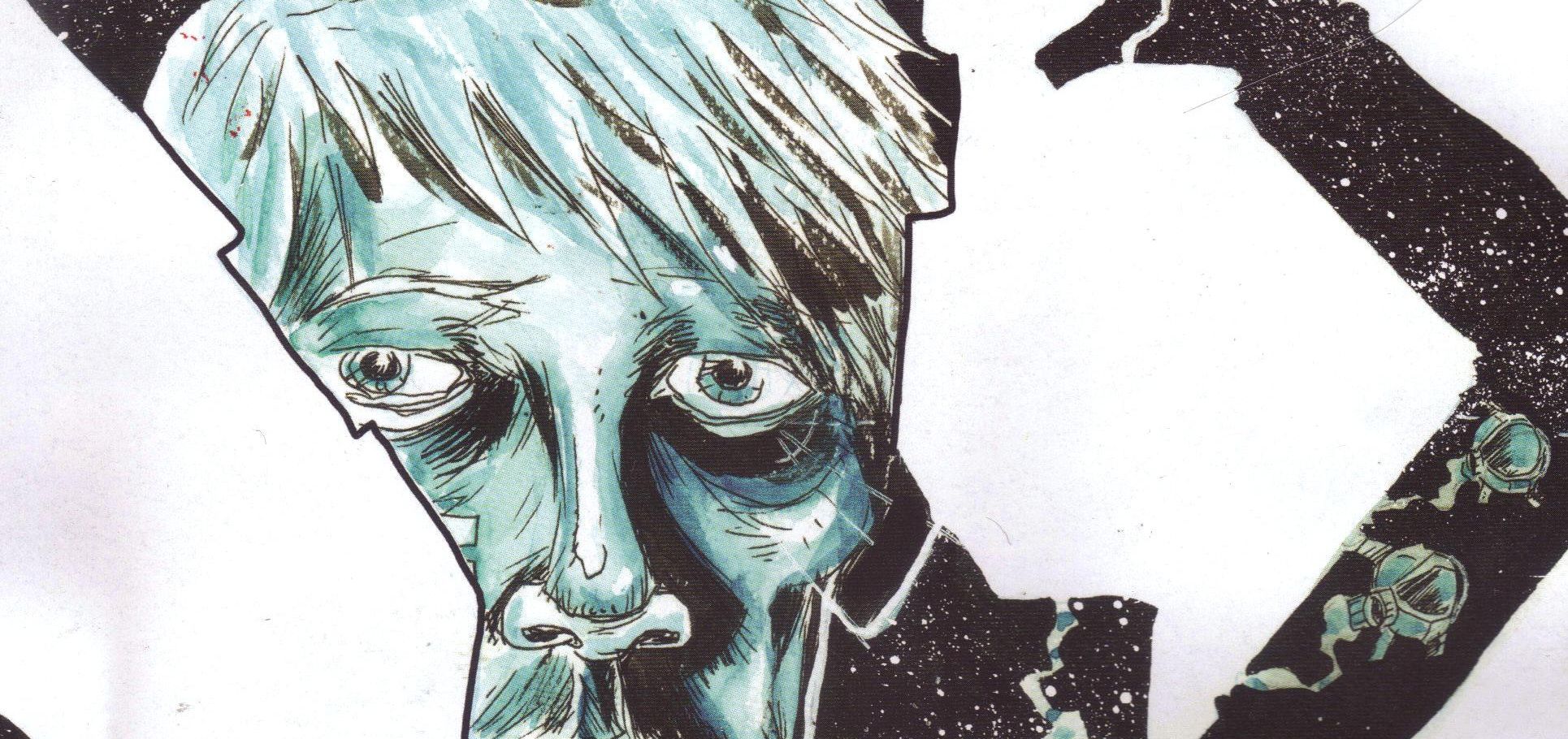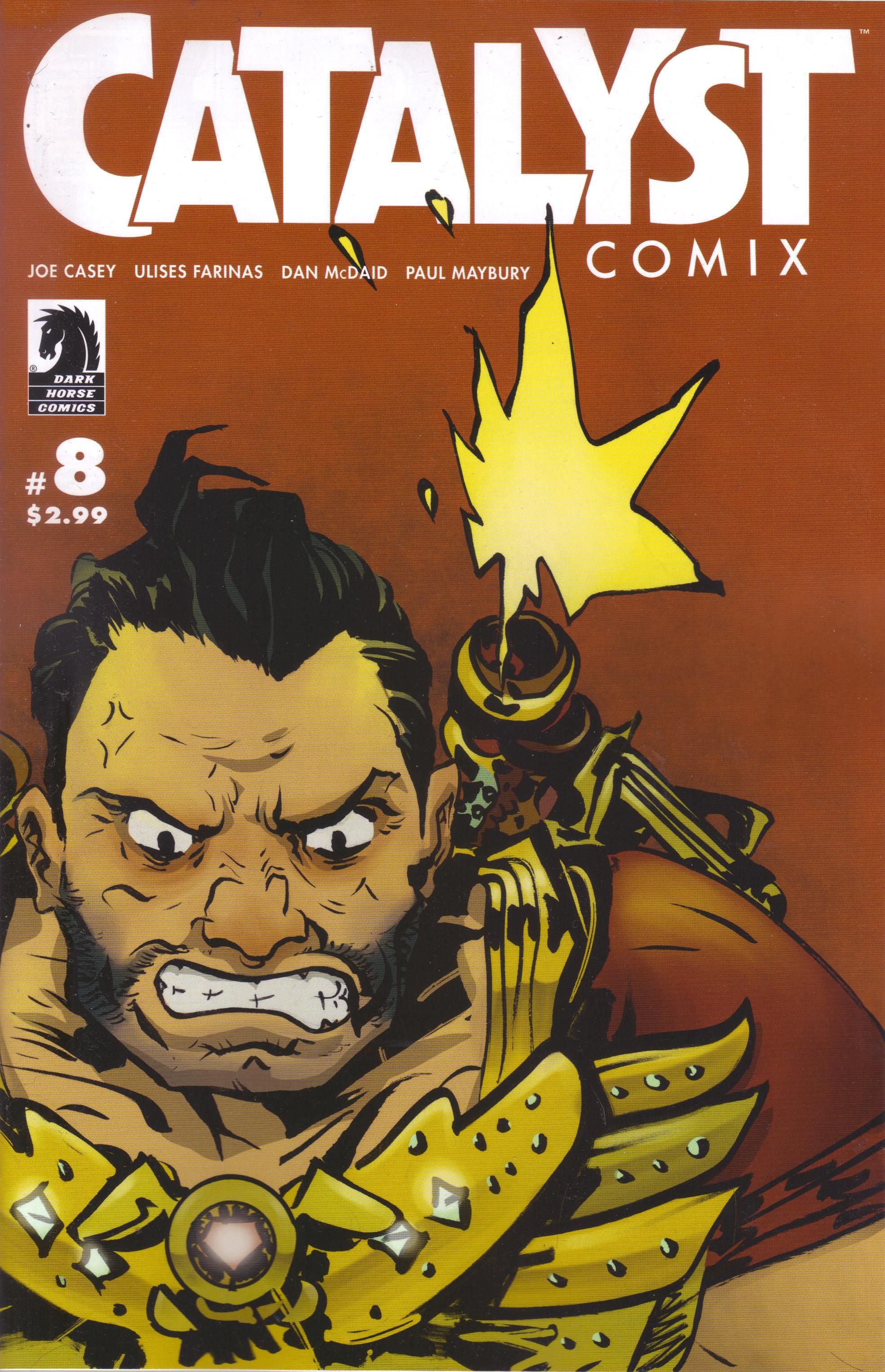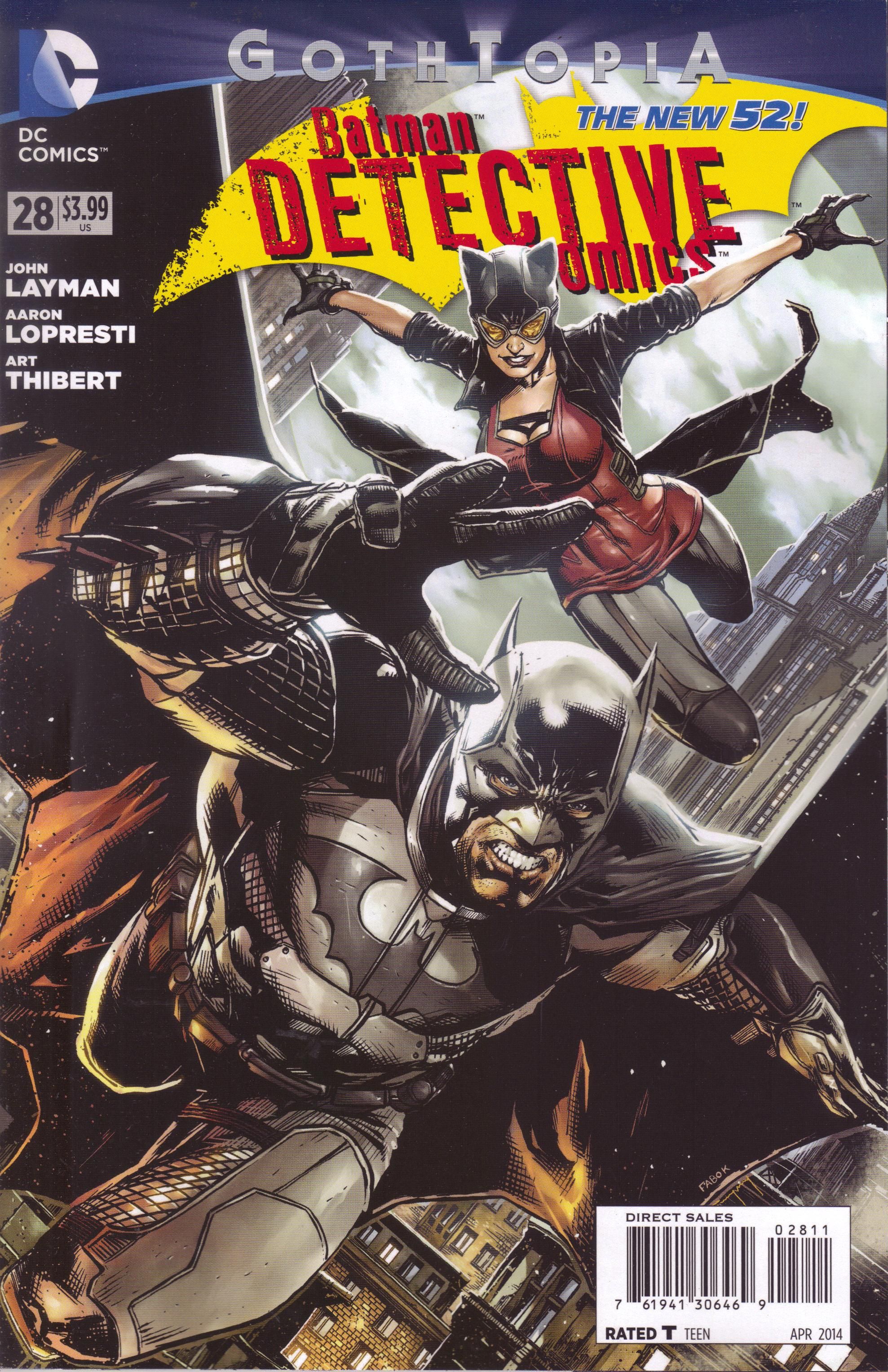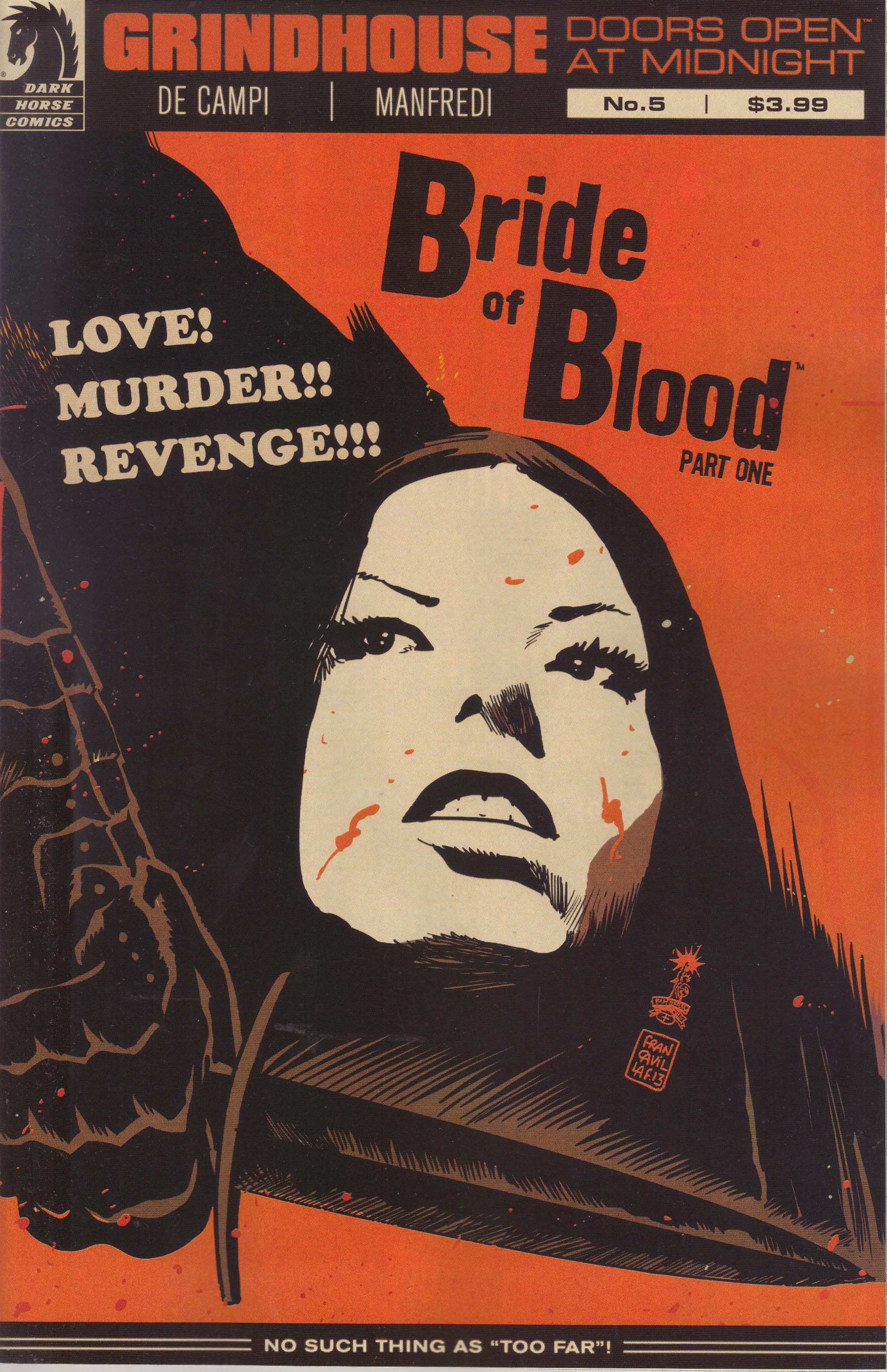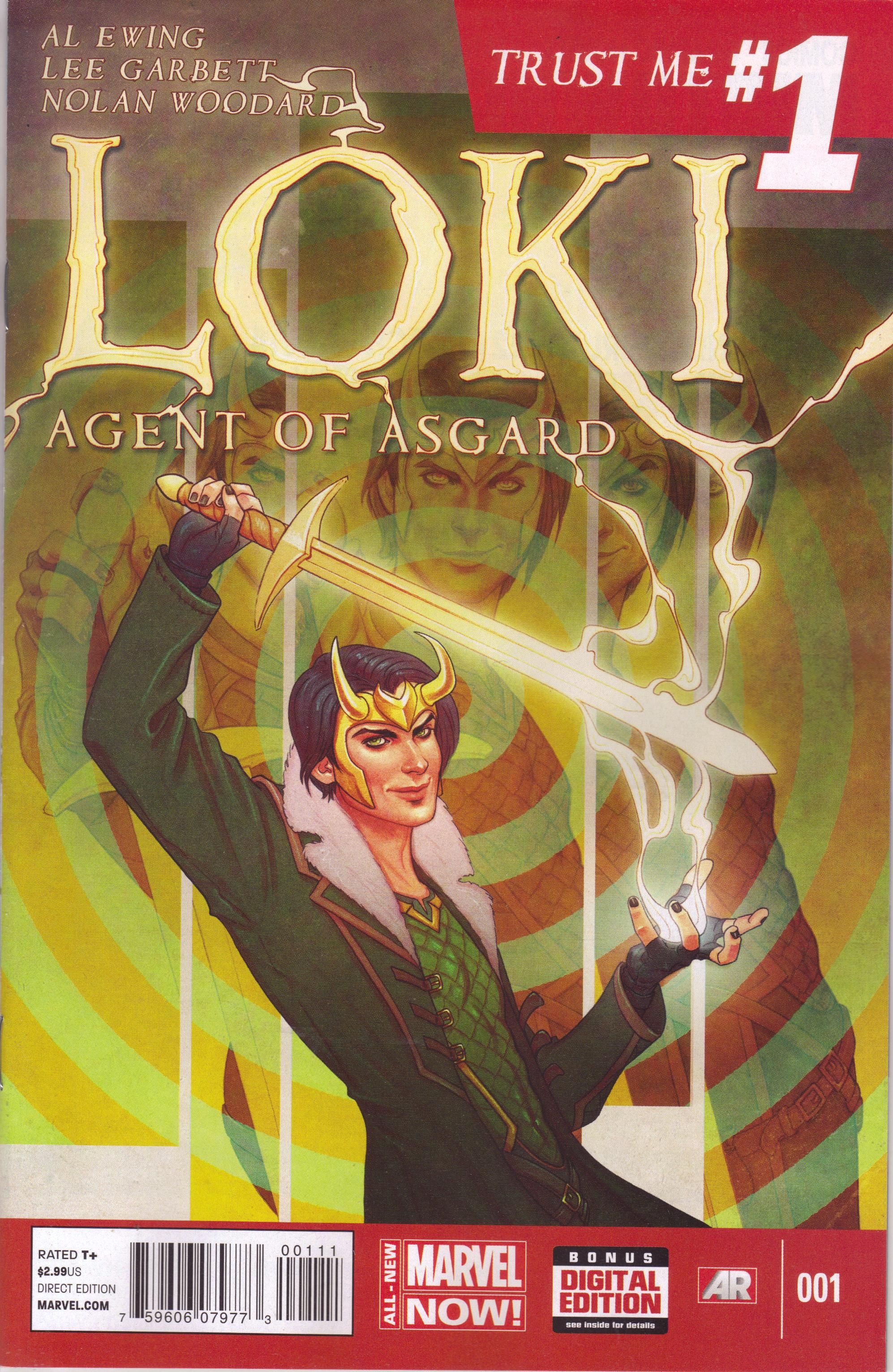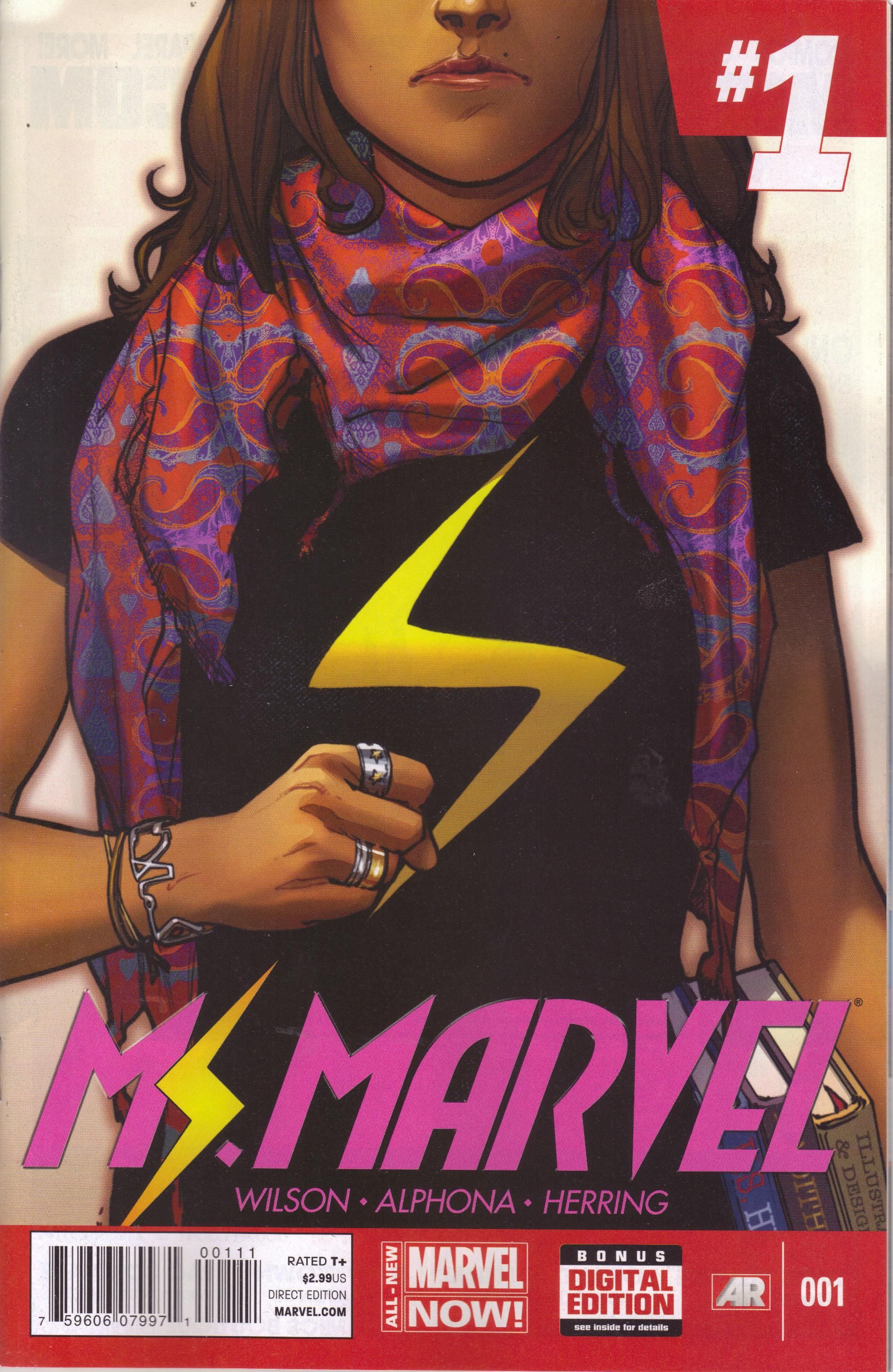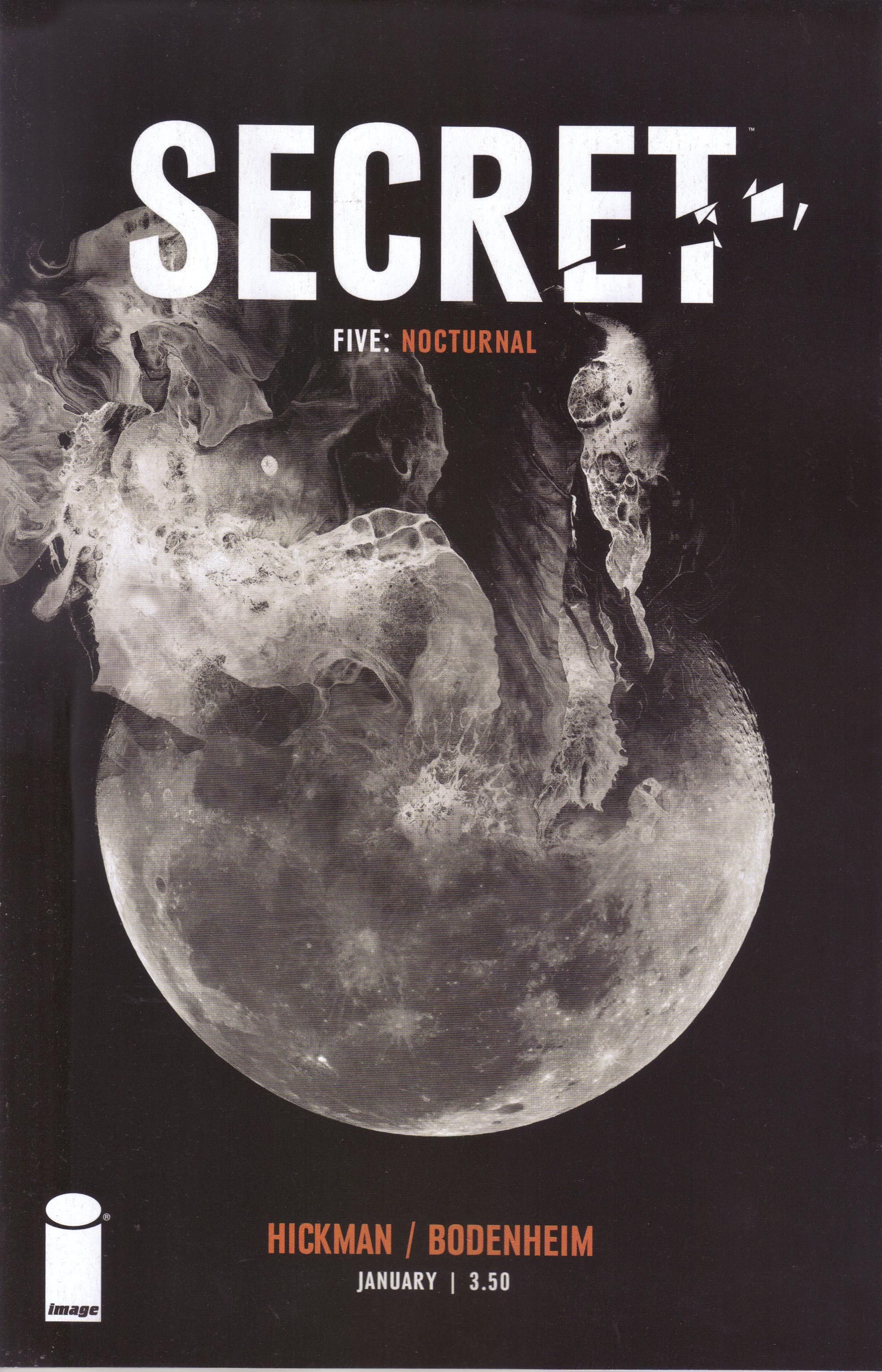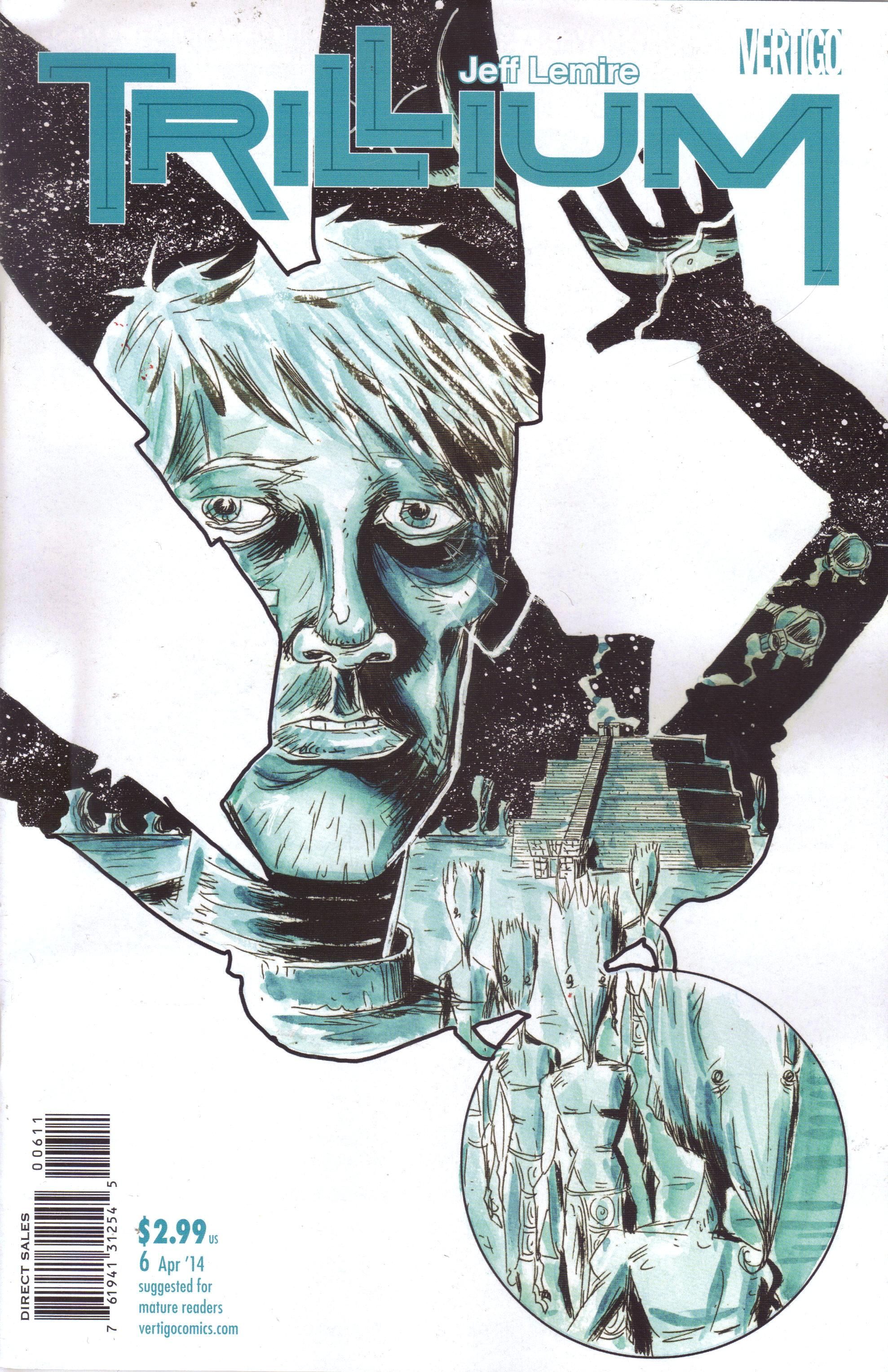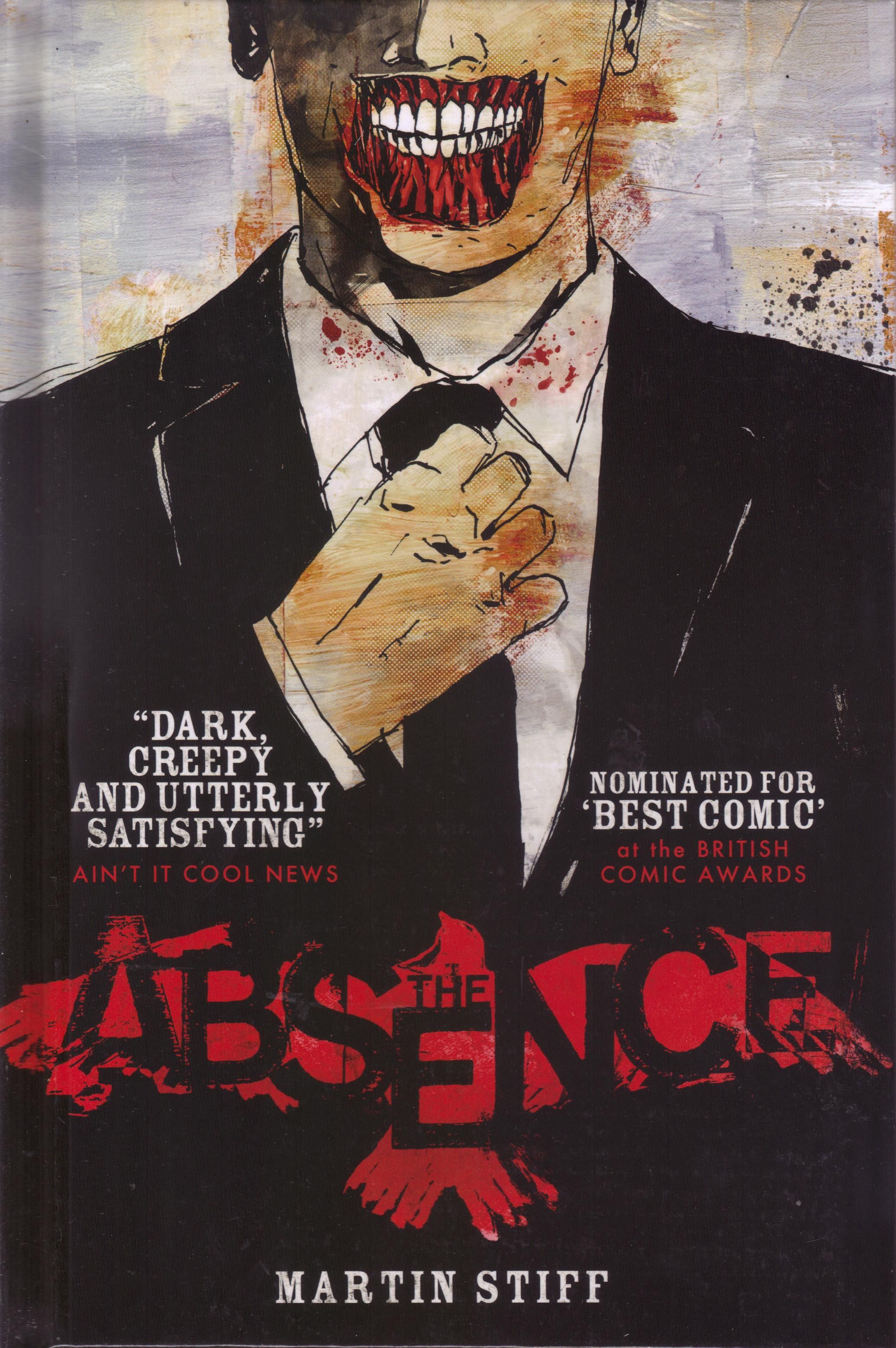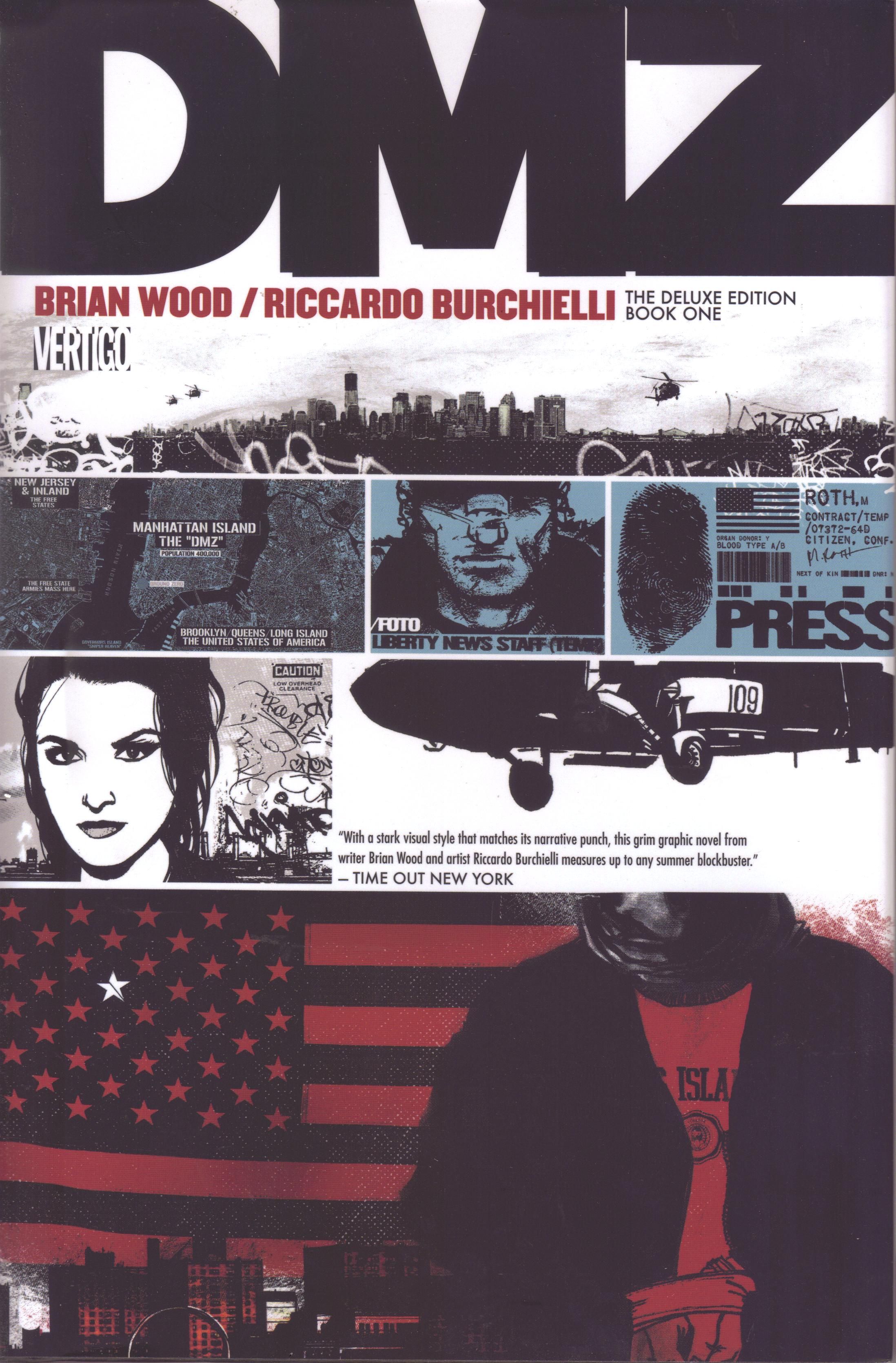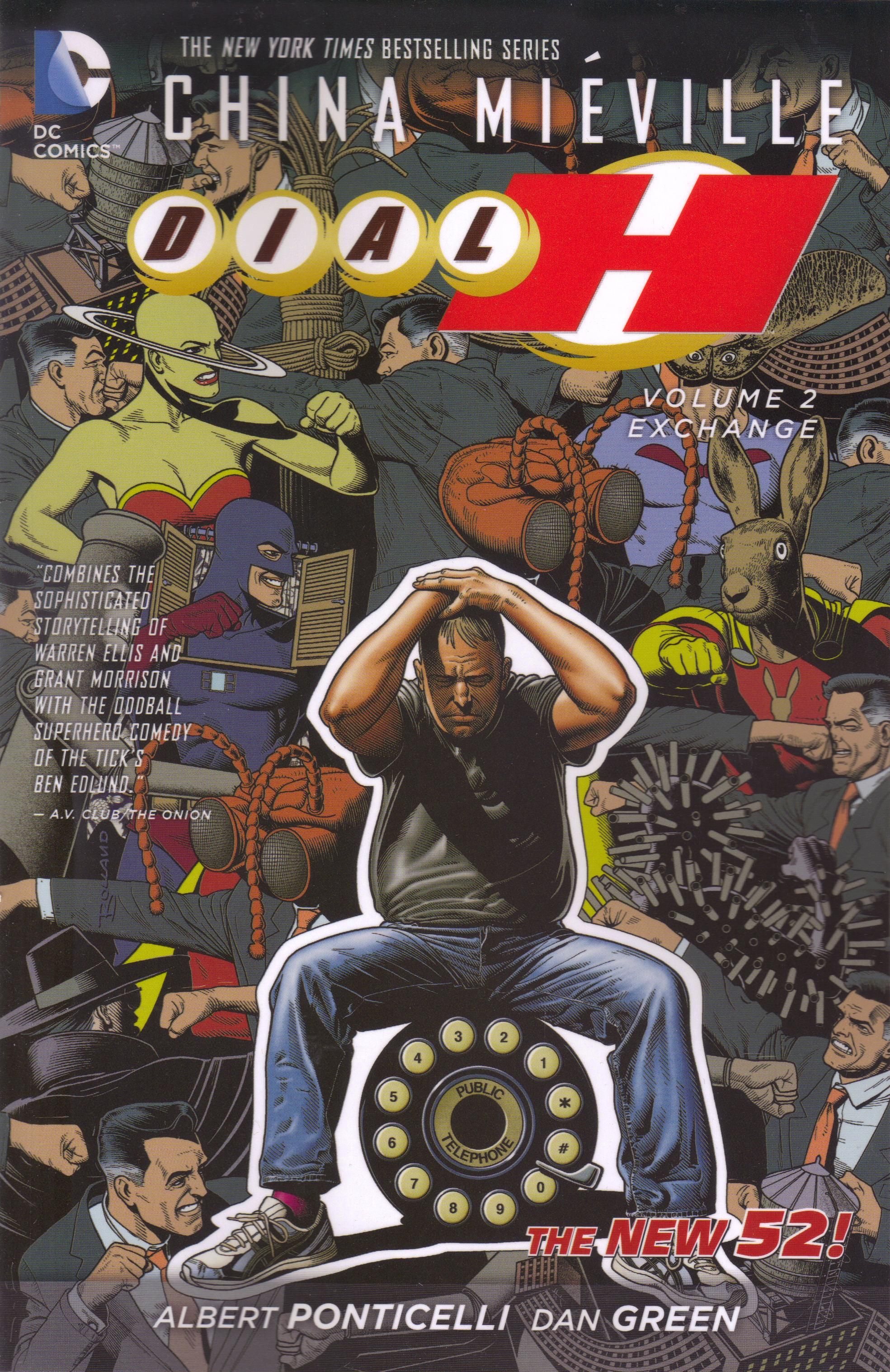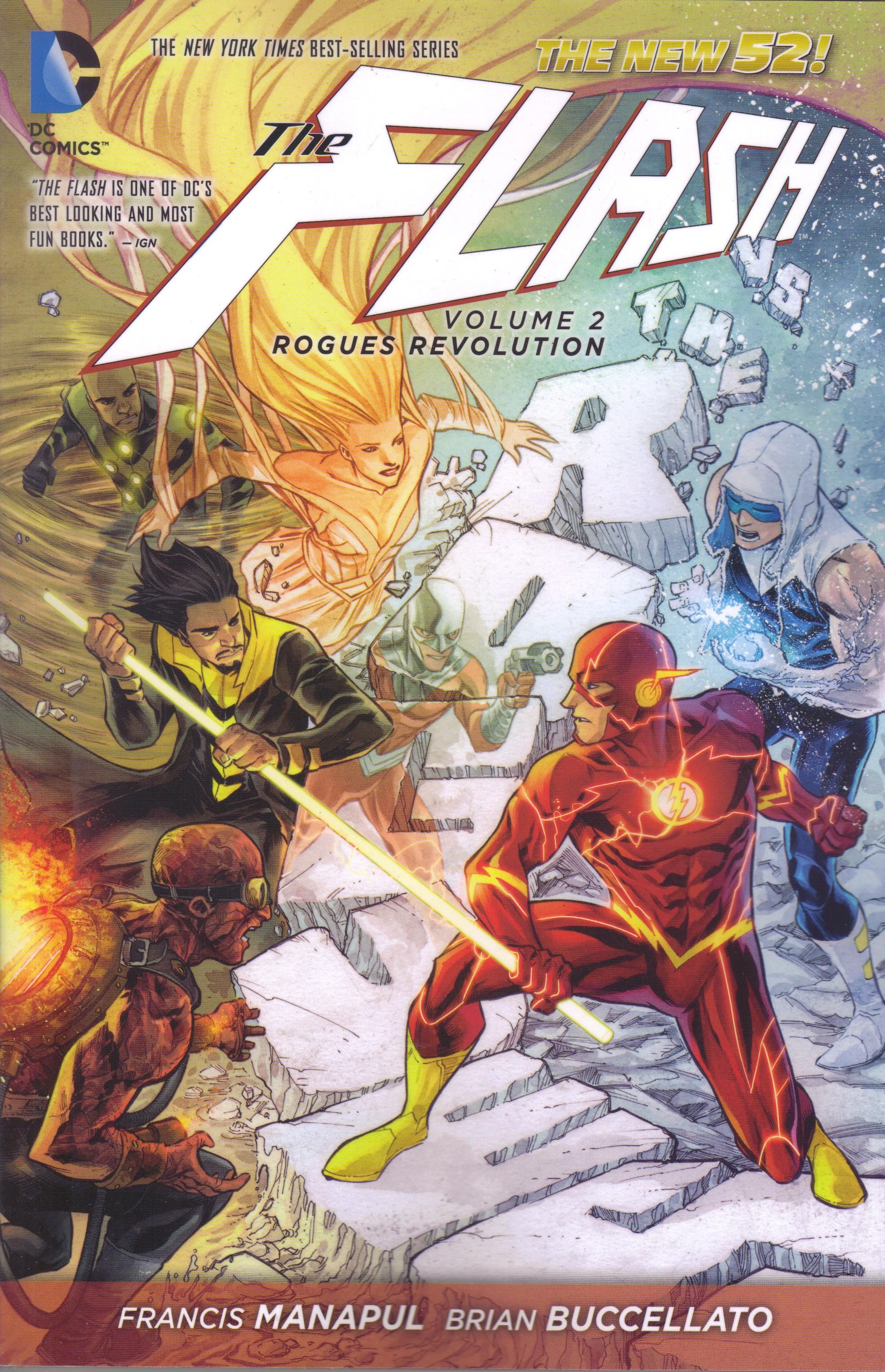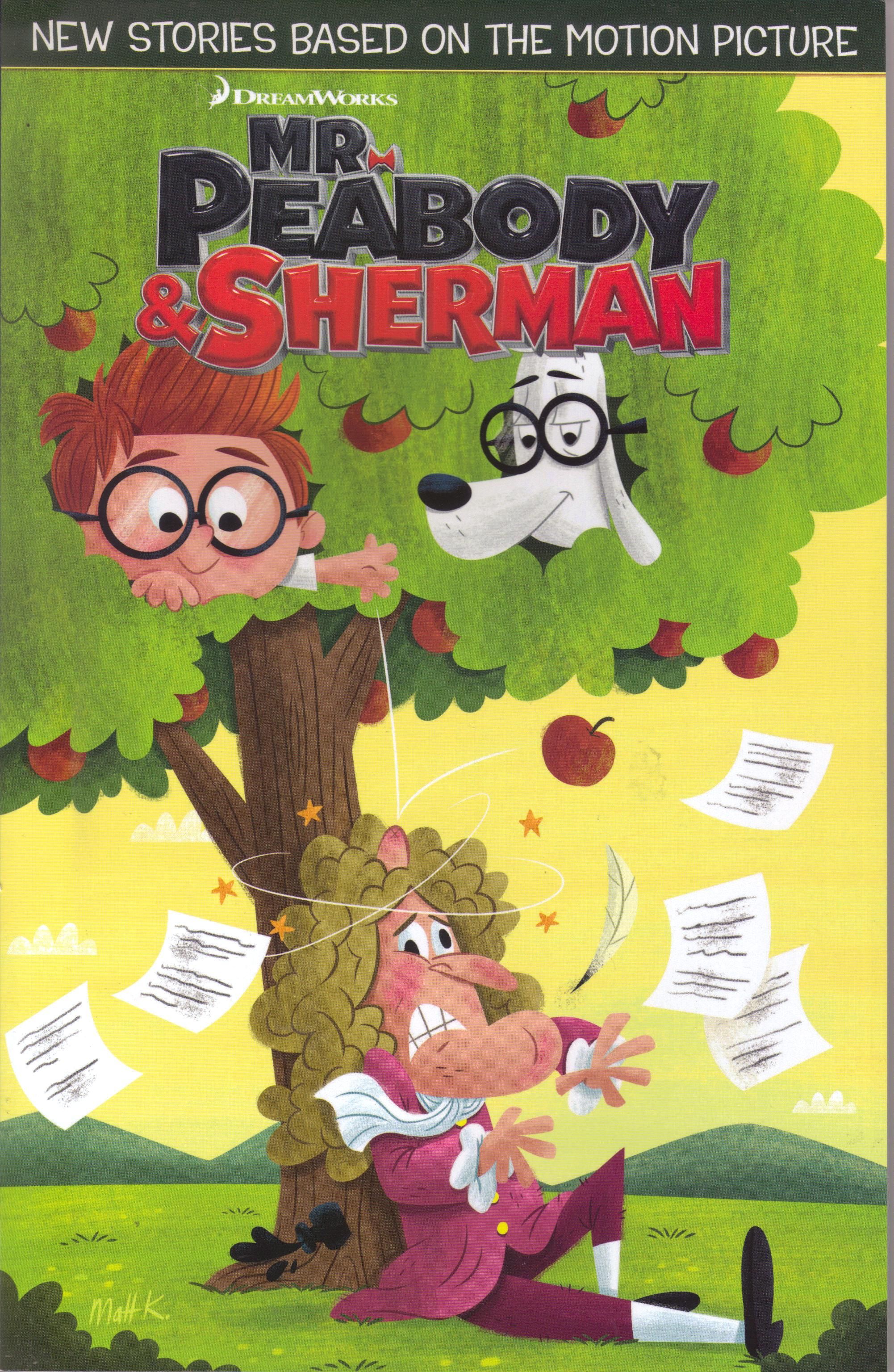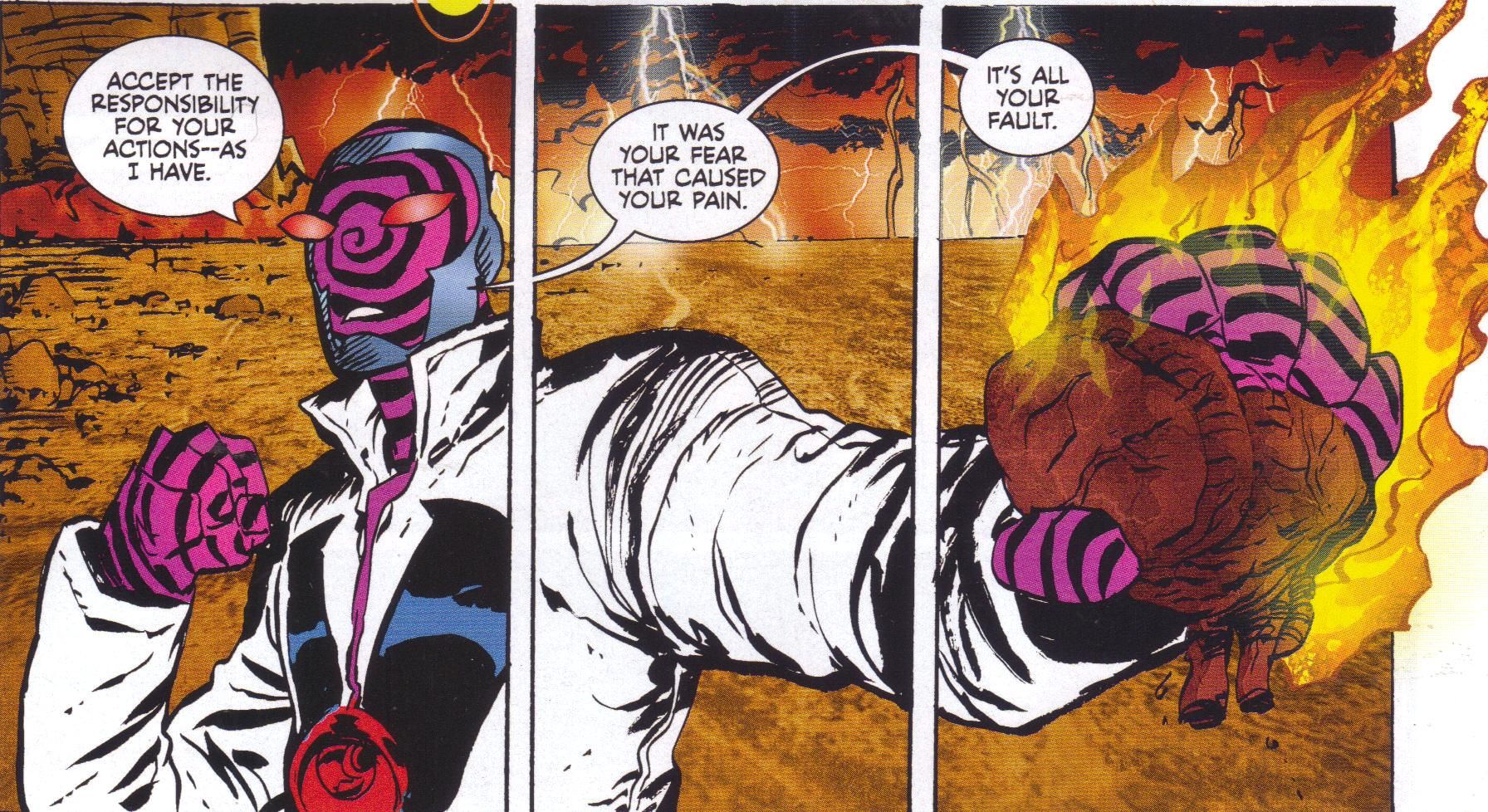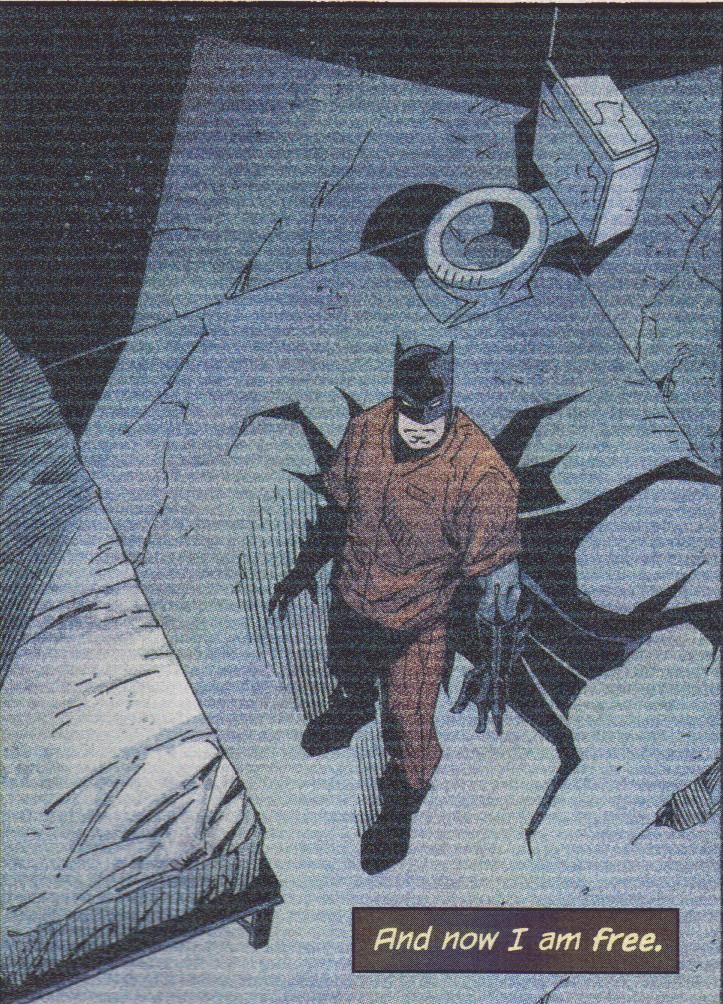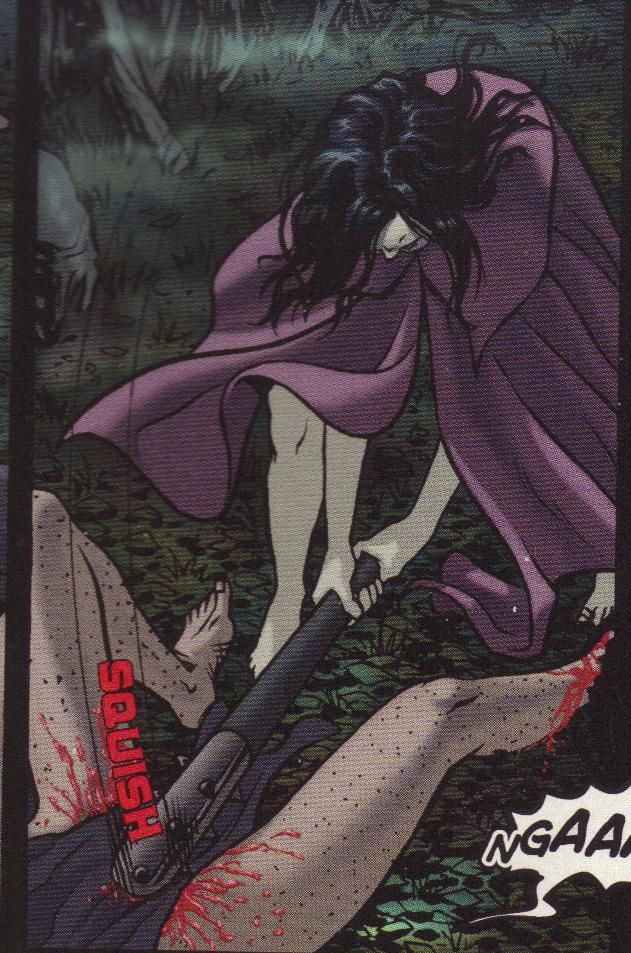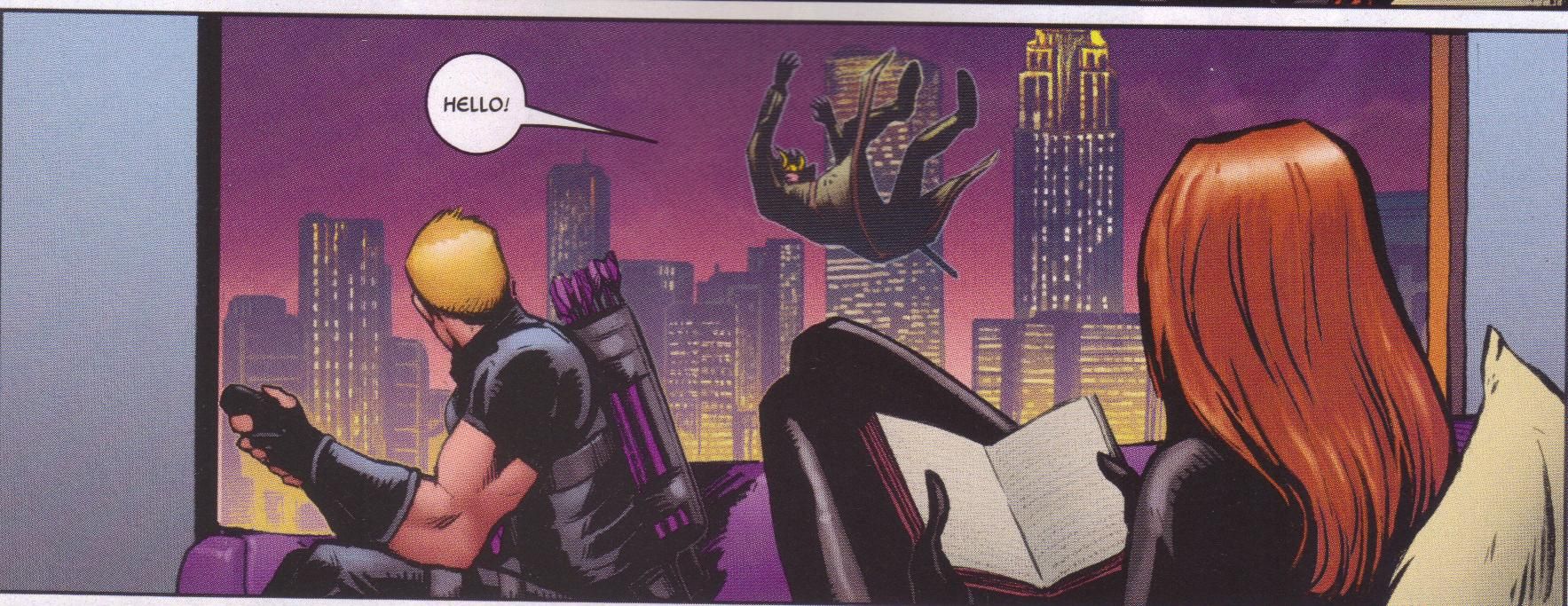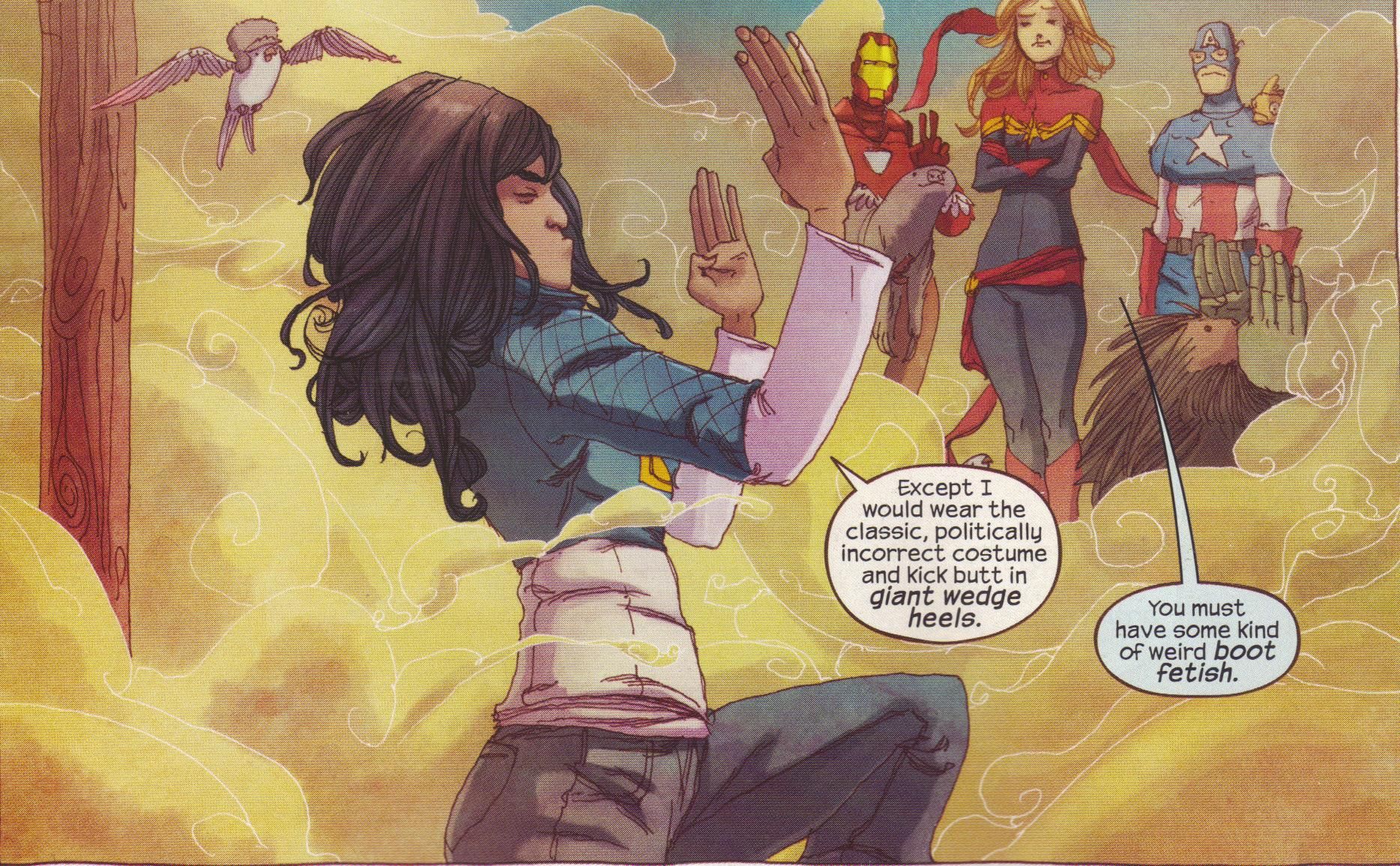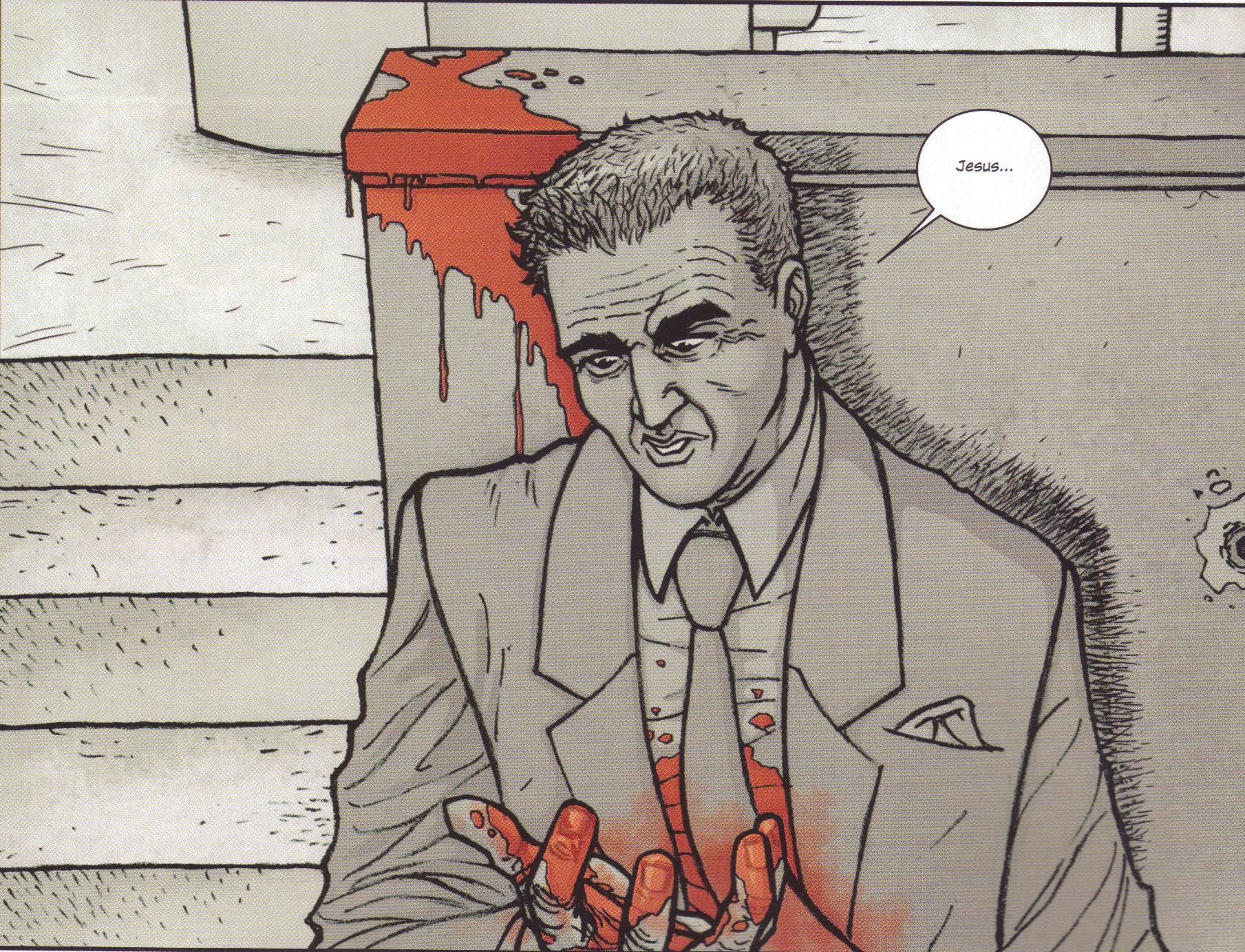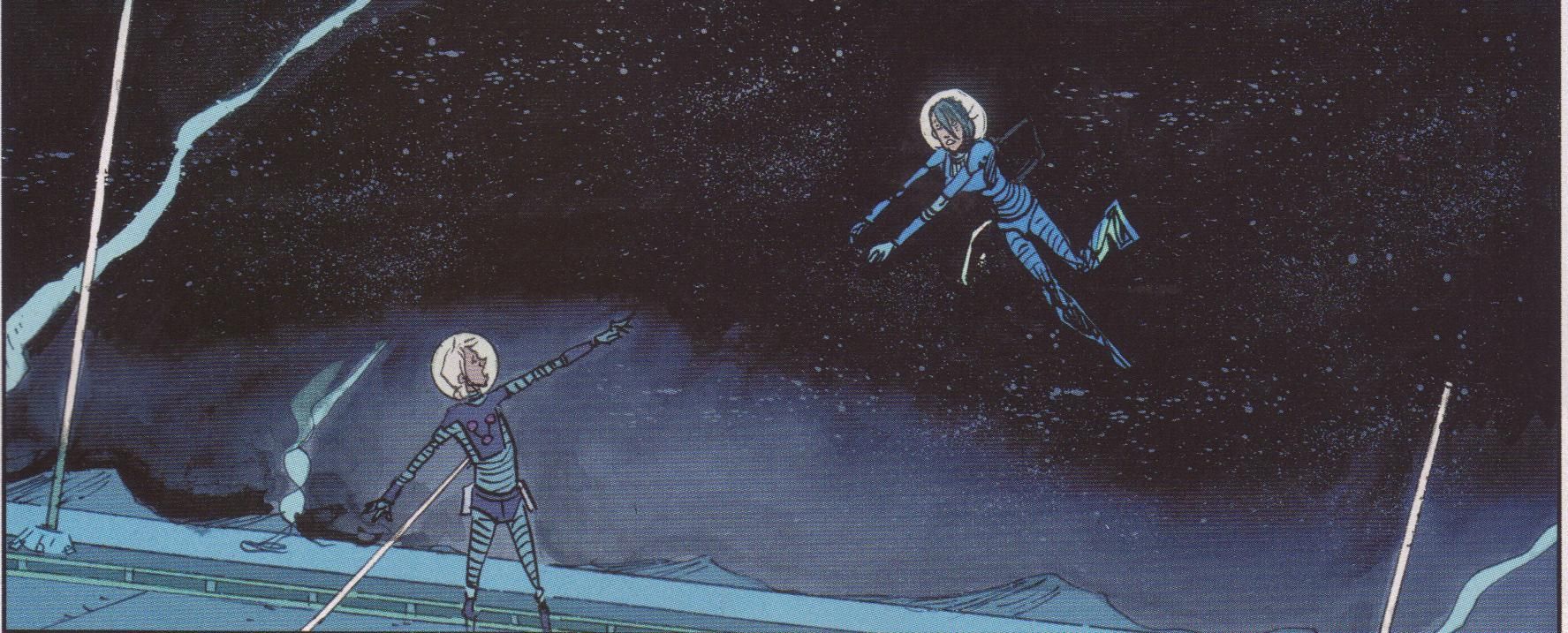"Well, I don't really know how it feels, because I was so upset over it, but basically it feels like you've just tried to kill yourself. Until you almost kill a person you don't really understand what it's like to be a human being, how quickly and easily you can die yourself. Up to that point, I pictured life as something that gradually leads to death. And death was a process, something that happened over a period of time, eventually. Now I know that death is a halt. It just happens, suddenly. Life ends. Life just stops, and even if you're ninety, it still happens right in the middle of your life." (Jeremy Leven, from Creator)
Catalyst Comix #8 (of 9) by Joe Casey (writer), Ulises Farina (artist, "Agents of Change"), Paul Maybury (artist, "Amazing Grace"), Dan McDaid (artist, "Frank Wells"), Brad Simpson (colorist), Rus Wooton (letterer), Ian Tucker (assistant editor), and Brendan Wright (editor). $2.99, 28 pgs, FC, Dark Horse. All relevent characters created by Barbara Kesel.
The penultimate issue of Catalyst Comix brings at least one of the plot threads closer together, and it will be interesting to see if Casey plans to do more of that in the final issue. He's getting more metaphysical in this book, as the superheroes are questioning their realities in different ways (in the case of the Agents of Change, it's because they are actually in a different reality). It's kind of cool to see the myriad ways that the heroes can bang against the walls of reality and perception, because it has made the book more thematically similar even if the three stories don't intersect. The Agents of Change are trapped inside a different reality, Frank Wells is trying to change the world, and Grace is trying to save the world from aliens who want to transform it, and she's also using different ways to communicate to transcend reality. The idea of superheroes is, of course, fantastical, and Casey can be counted on to approach the idea of superheroes from a lot of different angles. This is somewhat well-trod territory, of course, but the fact that Casey is able to get to it by different paths means that it doesn't feel as clichéd as it might otherwise. Casey is good at that sort of thing, and when he's doing it on one book with different heroes that could conceivably meet each other, it adds some nice twists to the general theme. It certainly helps when he has strong artists and a colorist in Simpson who recognizes that loud colors help make this an even more fantastic world, so that the theme that emerges strikes the right discordant tone.
This remains an odd comic, but certainly a curious one. Casey likes this mine, but since he's good at it, it's always fascinating to see what he digs up. I'm looking forward to the last issue.
Rating: ★ ★ ★ ★ ★ ★ ★ ☆ ☆ ☆
One totally Airwolf panel:
Detective Comics #28 ("Gothtopia Part 2 of 3: The Maddening Crowd") by Blond (colorist), Jared K. Fletcher (letterer), John Layman (writer), Aaron Lopresti (penciller), Art Thibert (inker), Katie Kubert (associate editor), and Mike Marts (editor). $3.99, 22 pgs, FC, DC. Batman, Jonathan Crane, and Catwoman created by Bill Finger and Bob Kane. Professor Pyg and Flamingo created by Grant Morrison and Andy Kubert. Mr. Freeze created by Bob Kane, David Wood, and Sheldon Moldoff. Harley Quinn created by Paul Dini and Bruce Timm. Killer Croc created by Gerry Conway, Gene Colan, and Curt Swan. Mr. Zsasz created by Alan Grant and Norm Breyfogle. Nocturna created by Doug Moench and Gene Colan. Poison Ivy created by Robert Kanigher and Sheldon Moldoff.
Layman's final story on Detective feels weird because DC decided to spin it off into a few other titles, but the story isn't really big enough to merit that. There's a footnote about where you can read about how the other Gotham heroes are dealing with the changes, but it still feels like DC was really trying too hard. That shouldn't matter if you're just reading the main story, which I am, but it's in the back of my mind. Plus, because the story launched among the background noise of Detective #27, it feels oddly paced. We've seen stories like this before, where everything Bruce Wayne knows is wrong!, and they're not the worst story to tell, and Layman does give the Scarecrow an interesting reason for doing all of this, but because of the pacing, there's no suspense about what Bruce is experiencing. In other stories of this ilk, there's usually a bit more of the "Is he insane?" vibe before the writer reveals that, no, it's okay, Gotham really does suck and Bruce really does dress up like a bat, but here, Batman figured it out so quickly that it doesn't feel like the stakes are too high. Layman's Batman is so good at what he does that there's very little doubt about his "rightness" (he's always right, of course, but there's less doubt than usual), so there's not a lot of tension about whether Bruce has been living a lie or not. This goes back to the idea of making this a "crossover." At the end of the book, it appears that Batman is going to have to fight his allies, who are under Scarecrow's influence. If this takes up most of the final issue, I don't know if it will work that well. It might, but then Batman has to take down the Scarecrow, too. Because it's a "crossover," Layman has to account for those characters rather than making it a more focused, psychological thriller (and I don't know if Layman had them in the story in the beginning or if he changed to accommodate the "crossover"). It feels a bit too easy, and that's disappointing. Layman has done a good job with Batman, and I hope his run ends on a high note. (I also like that Layman handwaves away the fact that nobody takes Batman's mask off. Writers always have to account for that when doing stories like this!)
One of the strange problems with this issue is Lopresti's artwork. Lopresti can be a very good superhero artist - his clean lines and fluid style suit the genre quite well. Recently, though, his work seems to be suffering, and I don't know why. I'm not sure if he's going too fast to keep up with deadlines, or if he's trying a new style that's not working as well, but his figures look a bit clunkier and his art looks a bit sloppy. Whatever personality it once had has drifted away, and there's nothing really to recommend it. It's not terrible art - it gets the job done - but it doesn't assist the story at all. His backgrounds, especially, do nothing to enhance the feeling of place. It's too bad, because while he's not one of my favorite artists, you could always count on Lopresti to make a comic nicer-looking. Here, his art is just dull.
I do hope the final issue of the run pulls this story together a bit. And hey, Layman is in India right now, taking pictures of the Taj Mahal, so he doesn't care what I say, does he?
Rating: ★ ★ ★ ★ ★ ★ ☆ ☆ ☆ ☆
One totally Airwolf panel:
Grindhouse: Doors Open at Midnight #5 (of eight) by Alex de Campi (writer), Dorotea Gizzi (colorist), Federica Manfredi (artist), Ian Tucker (assistant editor), and Brendan Wright (editor). $3.99, 24 pgs, FC, Dark Horse.
De Campi addresses the nudity question in the letters column, which is keen of her. She mentions that the first few issues were much more reticent because they weren't sure if retailers would order the book if they knew it had tits in it (unlike, you know, the horrible violence that everyone is okay with), but the support for the book means they can show more. That's nice. I was kind of assuming it was something like that - if they had stayed with nipple-blocking, I would have just figured they didn't want to show anything, but because they shifted, I assumed it was something like de Campi saying "Fuck it."
She dives into another trope, as a medieval wedding goes horribly wrong, many people are killed, and Uma Thurman - whoops, I mean "the bride" - vows revenge. The bride - Branwyn - is going to be married off to some high-falutin' lord, but when the wedding is interrupted by "reavers," the lord cowardly flees while everyone else is cut down. Branwyn then decides to, you know, kill the lord. She doesn't do it in this issue, of course, but I imagine he won't be too happy next issue. Stupid lord.
The story is perfectly fine, but Manfredi's art makes it better. I imagine I've seen Manfredi's art - she's been around for a little bit and has worked on some Marvel books - but I don't remember if I have, but she's quite good on this story. She uses some cleverly ornate panel borders to "medievalize" the drawings, and she has a nice, Amy Reeder-esque style that fits the finery early on in the issue. She and Gizzi do a nice job changing the tone of the book by dulling the colors when the violence begins, with darkens the mood and also helps highlight the blood. Manfredi's style helps make the art look more fairy-tale-like, which jars well with the actual horrific story unfolding.
But, yeah. Lots of blood. It's called "Bride of Blood," people!
Rating: ★ ★ ★ ★ ★ ★ ★ ☆ ☆ ☆
One totally Airwolf panel:
Loki: Agent of Asgard #1 ("Trust Me") by Clayton Cowles (letterer), Al Ewing (writer), Lee Garbett (artist), Nolan Woodward (colorist), Jon Moisan (assistant editor), Lauren Sankovitch (editor), and Wil Moss (editor). $2.99, 20 pgs, FC, Marvel. Loki, Thor, the Hulk, Idunn, and Fandral created by Stan Lee, Larry Lieber, and Jack Kirby. Captain America created by Joe Simon and Jack Kirby. Iron Man created by Stan Lee, Larry Lieber, Don Heck, and Jack Kirby. Hawkeye created by Stan Lee and Don Heck. Black Widow created by Stan Lee, Don Rico, and Don Heck. Freyja created by Stan Lee, Robert Bernstein, and Joe Sinnott. Gaea created by Steve Englehart and Don Heck or possibly Gene Colan.
I figured I would check out some of the #1 issues from Marvel, just for fun. I'm not going to buy the $3.99 books, but I can check out the first issues, but with Loki and our next entry, I might keep buying them if they're any good. So first we get Loki: Agent of Asgard.
Al Ewing is a bit of a critical darling around the comics blogaxy, but I've never read enough of his work to form much of an opinion. Everything I've read by him is fine but fairly uninspired, and Loki is more of the same. There's nothing wrong with the comic, and there's certainly potential, but it's certainly not a superb first issue. I guess if you're confident that people want to read a comic about Loki and Marvel is behind it for at least one arc, you can write a set-up issue like this and lean heavily on clichés, but I kind of wish writers would treat these first issues of Marvel and DC books as many do the first issues of independent books - your one chance to hook people. I have many issues with Rick Remender as a writer, but that dude knows how to write a first issue, even when he's doing stuff for Marvel.
So we get Ewing channeling Kieron Gillen and having young, hot Loki narrating about pop songs and how awesome they are. We have Ewing using the lamest line from Avengers, the one about Bruce Banner always being angry. We have Ewing highlighting once again that the Avengers are dicks. It's not bad, but it does feel very familiar. The problem with Loki is that he's a villain. He might be the god of mischief, not evil, but in the Marvel Universe, he's a bad guy, and writers have to constantly figure out ways to make it clear that, no, he's not really a bad guy at all, but that usually means making it look like he's a bad guy while doing something noble. It's been that way at least since Gillen made him the central character in Journey into Mystery, but because Tom Hiddleston is so easy on the eyes and was so charismatic in the movies, people now think Loki is some kind of anti-hero, and he's really not. This means that these writers have to spend so much time trying to show that Loki is really working on the side of angels even though he's doing something selfish that the stories become all about that. That makes the stories slow down quite a bit and makes the heroes look even douchier than they look when they're not acting as foils and/or Brian Michael Bendis is writing them.
Speaking of channeling, Lee Garbett becomes the latest artist to channel Stuart Immonen (with some Cary Nord thrown in), after Leonard Kirk began doing it a few years ago. Garbett is an interesting artist - he was not very good when he drew Morrison's Batman, but it seems like that might be the inking job, because when he inks himself, he often does decent work. But I'm not sure if it's just that. Anyway, he's a solid superhero artist, and Woodard's colors adds some nice depth to the work. "Evil Flashback Loki" is well done, as he not only looks evil, but decrepit, too. It's a perfectly fine comic.
Which is, of course, the problem. Loki doesn't really stand out. It's fine, but it feels like Ewing has cobbled together stuff from other writers and put out a fairly routine superhero book. That's fine, but this feels very old-fashioned, like a comic from the 1970s where new creators came onto Marvel titles and tried to keep everything the same. As this is a #1 issue, that makes the book feel really disjointed.
Rating: ★ ★ ★ ★ ★ ½ ☆ ☆ ☆ ☆
One totally Airwolf panel:
Ms. Marvel #1 ("Metamorphosis Part One of Five") by Adrian Alphona (artist), Joe Caramagna (letterer), Ian Herring (colorist), G. Willow Wilson (writer), Devin Lewis (assistant editor), and Sana Amanat (editor). $2.99, 20 pgs, FC, Marvel. Carol Danvers created by Roy Thomas and Gene Colan. Captain American created by Joe Simon and Jack Kirby. Iron Man created by Stan Lee, Larry Lieber, Don Heck, and Jack Kirby.
Every once in a while you get a piece of pop culture that's almost review-proof. I wonder if Ms. Marvel is one of those things. There are people who are going to buy this not necessarily because it's good or bad, but because it stars a female Muslim teenager of Pakastani descent. There are people who AREN'T going to buy this for the exact same reason. Whenever something like this happens - the back of the book is filled with people praising the comic even though it had just been announced - I wonder if those people will actually care about the quality of the comic (or television show, or movie, or whatever). Will the people who love the fact that Kamala Khan is a Pakastani-American Muslim teenaged girl care if the book isn't that good? Will the people who think Marvel is trying to force multiculturalism on a beset white America change their mind if they happen to pick up an issue and enjoy it? I like to think so, but experience has taught me otherwise. I don't care what kind of comic Marvel publishes - they could all star Laotian drag queens or anthropomorphic coelacanths - as long as they're good, and when they publish something like this, I imagine the "meaning" and the "message" can easily overwhelm the quality. But maybe that's just me.
I don't have a vested interest in seeing Marvel publish comics starring anyone specific, so I like to think I'm not a bad audience for this. I've liked both Wilson's and Alphona's art in the past, and I'm always interested in new characters (even knock-offs) getting the spotlight. There's far too much blandness in superhero comics and there are far too many published that stick to the old tropes, so why not give superpowers to a Muslim teenaged girl? And Ms. Marvel #1 is not bad. It's certainly not great, but it's not bad. In an effort to show how variegated the world is, Wilson tries to do too much - Kamala is a typical nerdy girl who writes Avengers fan fiction; she's part of a fairly traditional family; her brother is a very devout Muslim who nevertheless sponges off the family because he doesn't get a job; her father won't let her go to a party because she's a girl and gets really angry when she questions that; there's a blonde girl whom Kamala thinks is really cool even though she's incredibly ignorant and rude (and not really as cruel as some of the other characters say; she's more of an idiot than anything); there's a boy who respects Kamala but because he's so respectful he doesn't have the stones to ask her out (even though her family wouldn't let her date him anyway) ... it's a lot to take in. Then we get to the strange fog that drugs Kamala and the even stranger transformation of our lead character into a blonde hottie, which was unexpected (and I'm sure Wilson is going to delve into this wish-fulfillment more, or at least I hope she is). Wilson had to turn her into a superhero in some way, and she goes with the weird fog. I assume that Marvel thinks everyone in the world reads every single one of their comics and therefore knows all about the Terrigen Mists (which I assume this is), but it's a weird choice if you're trying to lure in people who might not read Marvel comics and are only interested in this because of Kamala's ethnicity. Marvel seems to be still trapped by the old business model, where they have to make sure their core readership thinks this "counts," so they're tying this into the big event that's occurring. I assume Wilson will explain it, and for this issue, at least, it doesn't really matter - superhero origin stories aren't the most logical things in the world - but I wonder how it will fly when new readers try to understand what the hell is going on.
But it's not a bad beginning. Usually with new characters, writers try a bit too hard to throw as much as they can into the first issue to "define" the character, and while Kamala's situation is fairly clichéd, it's not irredeemable. Alphona's art helps the script far more than Garbett's, for instance, helps Ewing's. Alphona's slightly cartoony style fits a teenage drama fairly well - it certainly did on Runaways - because he's good at exaggerated facial expressions and poses, and teenagers are all about exaggerated drama. Kamala's exasperation with her father at the dinner table is better expressed through her body language than her words, and Bruno's attempts to be both a tough guy (to defend Kamala from a stereotypical jock) and sensitive are made far more pathetic by the way Alphona dresses him. On the final page, Alphona does a nice job showing how awkward the newly-minted Ms. Marvel is, even though she's become everything she ever wanted. I'm not a huge fan of Herring's gauzy colors, but they're not bad.
I like this more than Loki, because at least Wilson seems like she's trying to put her own stamp on the character even though she lives firmly within the Marvel Universe. I'm not sure if I like it enough to keep getting it, but at least I'll think about it when the next issue shows up. I'm almost more curious to see the reactions to the comic. That should be fun!
Rating: ★ ★ ★ ★ ★ ★ ★ ½ ☆ ☆
One totally Airwolf panel:
Secret #5 ("Nocturnal") by Ryan Bodenheim (artist), Michael Garland (colorist), Jonathan Hickman (writer), and Rus Wooton (letterer). $3.50, 20 pgs, FC, Image.
I guess Secret really is back on track, because this is the second issue to ship in under two months, so huzzah! It's too bad - this really is a nifty little espionage comic, and I'm looking forward to reading the entire thing in one sitting. Bodenheim does some really nice work with the page layouts in this one, splintering the panels to create a mosaic of events, and overlapping some of them slightly to create a "fractured mirror" look. It's pretty cool. Other than that, there's not much to say. The game is afoot, I guess.
Rating: ★ ★ ★ ★ ★ ★ ★ ☆ ☆ ☆
One totally Airwolf panel:
Trillium #6 (of eight) ("Escape Velocity") by Jeff Lemire (writer/artist/colorist), Carlos M. Mangual (letterer), José Villarrubia (colorist), Sara Miller (assistant editor), and Mark Doyle (editor). $2.99, 20 pgs, FC, DC/Vertigo.
Lemire's screwing around with the pages in the single issues - in this one, you're reading along perfectly happily when suddenly you have to turn the book upside-down, and then he begins to switch between that on the same page - might get annoying (I happen to dig it), but if you get past that, Trillium really is a wonderful comic book. It's a love story, although the two leads haven't spent a lot of time together. Lemire still makes their longing for each other something that feels more important than it probably is, which is a nice trick. It's also a mystery, as the two have become trapped in different times and, in Nika's case, a different reality (maybe?), and don't know how to get back and also how to solve the problem of humanity's extinction (oh, yeah, there's that, too). Lemire keeps upping the ante, so at the end of this issue, things look even more hopeless than before. Earlier in the series, it seemed that William was a bit more interesting than Nika, but in the past two issues, William's story has become a bit more bland and Nika's has become fascinating - probably because Nika is trapped in a world with more regressive attitudes toward women, while William is in a world where he simply has a job to do, even though he believes in the wrong time. Lemire's pacing of these issues is really nice, too, which is one reason it's fun to read them in single issues - he uses his 20 pages to really good effect.
The book has been delayed a bit, which is too bad, but it's definitely worth waiting for. I'm really looking forward to seeing how Lemire wraps this all up, and I hope it's as good as it's been so far.
Rating: ★ ★ ★ ★ ★ ★ ★ ★ ☆ ☆
One totally Airwolf panel:
The Absence by Martin Stiff (writer/artist). $19.99, 271 pgs, BW, Titan Comics.
A strange dude returns to his town in England during World War II, and bad things start happening? Yeah, I can get behind that. This looks very cool.
DMZ: The Deluxe Edition Book One by Riccardo Burchielli (artist), Jeromy Cox (colorist), Kristian Donaldson (artist), Jared K. Fletcher (letterer), Brian Wood (writer/artist), and Peter Hamboussi (editor). $29.99, 302 pgs, FC, DC/Vertigo.
Years ago I started buying DMZ in trade, but I never got around to finishing the series, and I kind of gave up. I liked it, but I figured I'd get them down the road. Then DC decided to do these big hardcovers (this one collects the first 12 issues), so I guess I'll get these and get rid of my trades. That's just how I roll!
Dial H volume 2: Exchange by Carlos Berrocal (artist), Ricardo Burchielli (artist), Carmen Carnero (artist), Eva de la Cruz (colorist), Taylor Esposito (letterer), Michelle Farran (artist), Dan Green (artist), Tanya and Richard Horie (colorists), Frazer Irving (artist/colorist), Jock (artist), David Lapham (artist), Jeff Lemire (artist), Emi Lenox (artist), Sloane Leong (artist), Tula Lotay (artist), Brendan McCarthy (artist), China Miéville (writer), Allen Passalaqua (colorist), Alberto Ponticelli (artist), Emma Ríos (artist), Mateus Santolouco (artist), Liam Sharp (artist), Zak Smith (artist/colorist), Steve Wands (letterer), Kelsey Wroten (artist), Annie Wu (artist/colorist), Marley Zarcone (artist), and Rachel Pinnelas (editor). $16.99, 218 pgs, FC, DC.
The first volume of Dial H was quite good. I assume this one is as well!
The Flash volume 2: Rogues Revolution by Wes Abbott (letterer), Oclair Albert (artist), Michael Atiyeh (colorist), Pat Brosseau (letterer), Brian Buccellato (writer/colorist), Wes Craig (artist), Ian Herring (colorist), Hi-Fi (colorist), Scott Kolins (artist), Francis Manapul (writer/artist), Carlos M. Mangual (letterer), Ray McCarthy (artist), Diogenes Neves (artist), Dezi Sienty (letterer), Marcio Takara (artist), Marcus To (artist), Robin Wildman (assistant editor), and Peter Hamboussi (editor). $16.99, 138 pgs, FC, DC.
This seems like the best pure superhero book of the DCnU, at least while Buccellato and Manapul were the creators. Now that Manapul is moving on, I wonder if Buccellato's scripts will work as well with a new artist. We shall see!
Mr. Peabody & Sherman by Jeremy Colwell (colorist), Sholly Fisch (writer), Tom B. Long (letterer), Jorge Monlongo (artist/colorist), Justin Eisinger (editor), and Alonzo Simon (editor). $17.99, 90 pgs, FC, IDW.
I showed this to my daughter, and she said, "Oh, just like the movie." Well played, IDW.
**********
I find it hilarious that people are debating Peyton Manning's legacy after the Super Bowl. First of all, just like 24-hour news stations, 24-hour sports stations are the worst, leading to endless debates about things like Peyton Manning's legacy. Here's the thing, though: nothing will change about Peyton Manning's legacy. What is the biggest individual achievement you can get in sports? Getting into the Hall of Fame seems like the ultimate achievement. Manning will be in the Hall of Fame the first time he's eligible, and all these people debating his legacy will vote him in unequivocally. That's all that matters. It doesn't matter if losing the game means he'll never be the "greatest of all time," because that's such an amorphous designation that it's essentially meaningless. I can make a case that Sammy Baugh is the greatest quarterback of all time. I can make a case that Otto Graham is. Yet the only criterion for G.O.A.T., apparently, is Super Bowl wins. So where's Terry Bradshaw on the list?
I love that Clark Gregg called people who don't like Agents of S.H.I.E.L.D. "losers". I actually like the show and I think it's taking way too long to get to the good stuff, as Gregg promises is coming. Man, people are really needy, aren't they? Shouldn't Gregg just be happy that he's on a network show that will probably make it to a second season when so many other better actors are on shows that get axed quickly? Did he answer that question at the end of a long, frustrating day of filming?
Let's see what's going on with the Ten Most Recent Songs on My iPod (Which Is Always on Shuffle):
1. "Beautiful People" - Stress (1991) "I don't want to go to war - there ain't that much worth fighting for"
2. "The Nights of Wine and Roses" - Japandroids (2012) "We don't cry for those nights to arrive, we yell like hell to the heavens"
3. "Welcome to Your Wedding Day" - The Airborne Toxic Event (2011) "And we pray as we're watching the charade"
4. "Escape from the Killing Fields" - Ice T (1991) "I gotta make my move 'cause I'm a renegade; I recognize when mind techniques are being played"
5. "Head Over Heels" - ABBA (1981) "Exert that will of your own when you're alone"
6. "Captain of a Shipwreck" - Neil Diamond (2005) "When life brings the day uncertain I will soothe you with my song"
7. "Spoonman" - Soundgarden (1994) "All my friends are skeletons"
8. "Somewhere Else" - Marillion (2007) "White-knuckle journey blackened my eye and cut my lip"
9. "Pretty Colors" - Hamell on Trial (2006) "When I ate her pussy it tasted like candy - it tasted good"
10. "The Divide" - Grace Potter and the Nocturnals (2012) "The lines are blurring now and I can't tell the lion from the beast"
No one got last week's Totally Random Lyrics - they were from "Bring Your Love Down (Didn't I)" by Yaz (or Yazoo, I guess, but I'm a 'Murican, and they'll always be YAZ!). So let's check out some other Totally Random Lyrics for this week!
"Will we grow together
Will it be a lie
If it lasts forever, hope I'm the first to die
Will you marry me
Can we meet the cost
Is the power of love worth the pain of loss
Can you pay the bill
Will you keep the change
Are you here for the party, or are you here for the pain"
I've given up wondering if those are hard or not. You guys seem to know lyrics I think are hard and ignore ones I think are easy. Everything's topsy-turvy! I hope everyone has a great day, even if you're buried under mountains of snow. That can't be fun!

